There’s a lot more substance to this topic than you might think — it’s not just marketing hype. The rigorous “Genuine Parts†testing program is especially interesting and relevant to the price/value relationship.
In the last issue of StarTuned, we talked about why you should use only genuine Mercedes-Benz brake parts from your local dealer in your service work, and we believe the reasons we gave were pretty compelling.
We found the subject so interesting and important that we decided to do an additional article to explore the parts situation in general, and the rationale behind you, the ISP (Independent Service Provider), staying with genuine M-B O.E. components. Much of this has to do with the company’s commendable U.S. parts-testing programs.
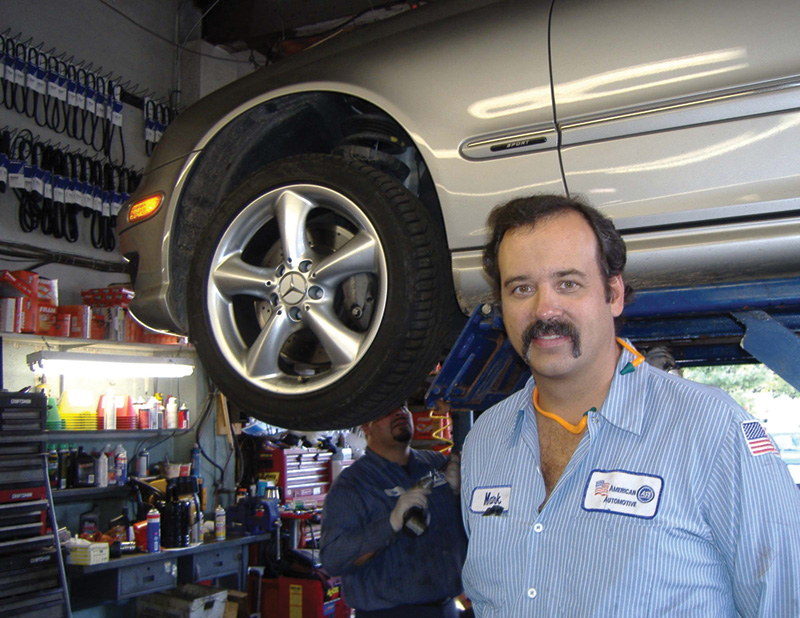
Mark Boege, a New Jersey ISP, tells StarTuned that he’s always satisfied with Genuine Mercedes-Benz parts.
In the previous article, we mentioned how genuine Mercedes-Benz brake parts were the best things to use because they were engineered and tailored for the characteristics of the specific model involved, not just generically one-size-fits-all. It turns out that that’s the case with most of the parts you buy from your local M-B dealer.
Â
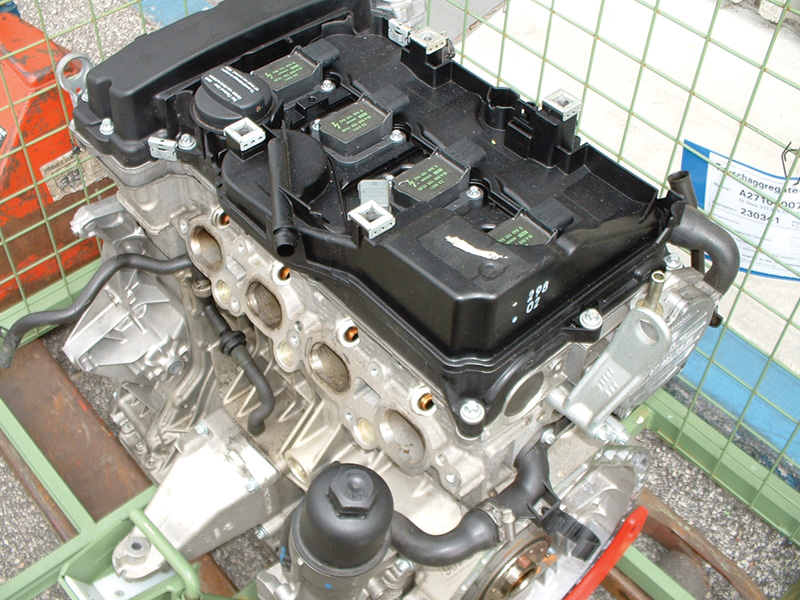
. . or this remanufactured engine have the industry’s strictest quality control, and carry unequalled warranties. They’re also often the subject of aggressive price-cutting programs.
Obviously, seeing the road clearly is important to safety
Take windshield wipers, for example. With Genuine M-B parts, their curve matches that of the windscreen of each model, so the pressure on the blade/glass interface is optimized. While competing wiper blades are made of poured rubber, Genuine M-B blades are extruded, which gives better performance and a 20% lower wear rate — they’re tested for 1.5M cycles! They also have a helpful wear indicator that changes color when replacement is needed, which amounts to a great sales tool. Installation is far easier and faster, too, without all the confusion of the various attachment parts of aftermarket versions. If you look at it over the course of a year, this can add up to hundreds of dollars worth of labor.
Or, how about filters? With cabin air filters, the time required for installation also adds up. Genuine Mercedes-Benz cabin filters can be installed more quickly because they don’t have to be modified to make them fit. Sealing is optimized, as well. The seal is tested for blow-by with special equipment that measures particles in the air.
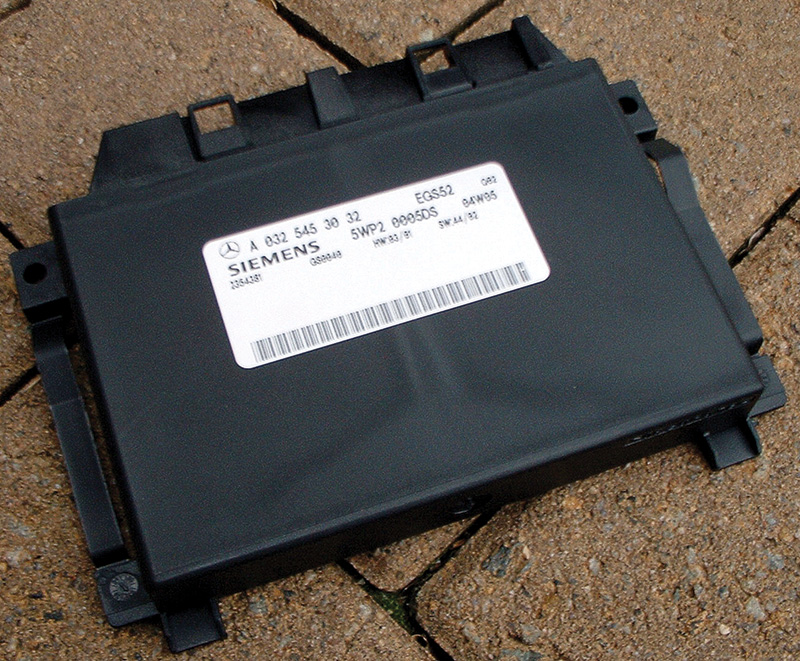
The cost of replacement engine management computers (PCMs for Powertrain Control Modules, to use SAE’s standardized terminology) is another thing on which Mercedes-Benz has instituted money-saving programs.
Air filters are tested for 2,000 miles over the same route. The tests have proved that the use of genuine air filters has a substantial impact on fuel efficiency. Especially with diesels, performance also goes down when a non-genuine part is installed.
Independent testing in the U.S.A.

The EPC (Electronic Parts Catalog) is sophisticated and comprehensive. You’ll always get the right part the first time. It’s free, too. Just visit [Edit: https://www.startekinfo.com/parts]
We’ve mentioned testing, but the Mercedes-Benz Genuine Parts Testing Program is much more comprehensive and appropriate to our market than you probably know. The testing is designed to measure the actual impact the quality of the part has on the customer. In other words, for real-world situations, not for some ivory-tower idea.Â
Testing is done in the U.S., which assures that the findings are really market-appropriate. Not only does Mercedes-Benz sell more vehicles in this country than anywhere else, the U.S. also has special conditions (there’s nothing in Europe equal to Death Valley), different fuel blends, bigger engines, and unique regulations. This is true road testing; it’s not done on a dynamometer. Â
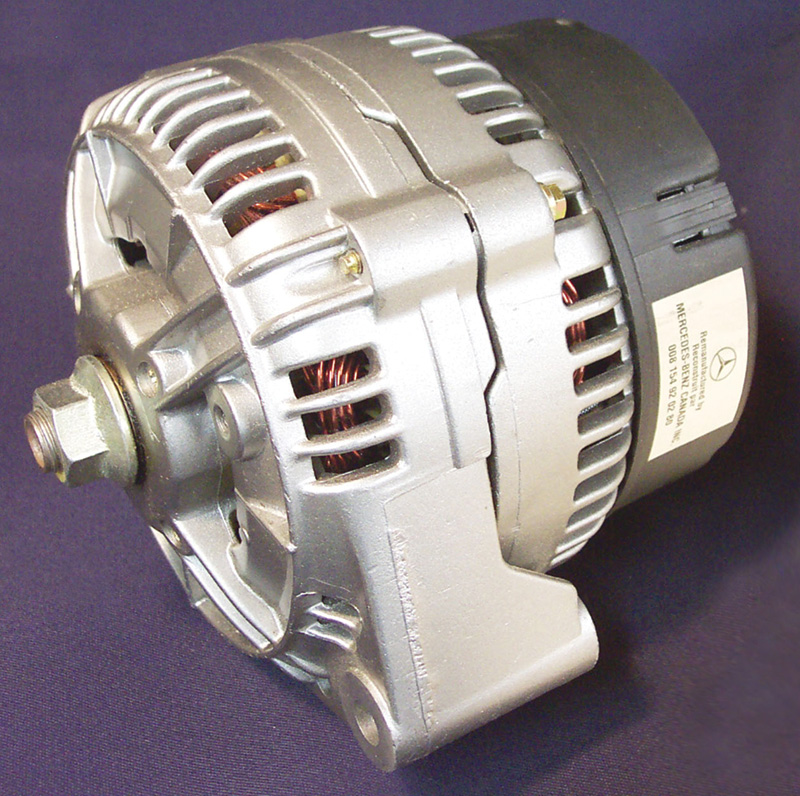
If you’ve been in the auto service business for any length of time, you’ve seen problems with the quality of aftermarket remanufactured alternators. This is never an issue with Genuine Mercedes-Benz parts.
The location within the U.S. is chosen according to the type of part being tested. For example, testing brake pads in the brutal stop-and-go traffic of Los Angeles is ideal. Both genuine O.E. and aftermarket linings are installed on vehicles that are driven on a predefined route for one month. The driver has a “clicker,†which he or she can hit during a braking event that exhibits issues such as noise or vibration so that the on-board equipment records it. Microphones are used for brake noise, and brake dust is measured with a photometer. Even something as subjective as pedal feel is evaluated. Once again, testing is for impact on the customer.
Who conducts all this disciplined testing? In every case, Mercedes-Benz employs independent laboratories to be sure the results are from an objective third party and are not skewed by brand loyalty.
Convenience, speed, and accuracy
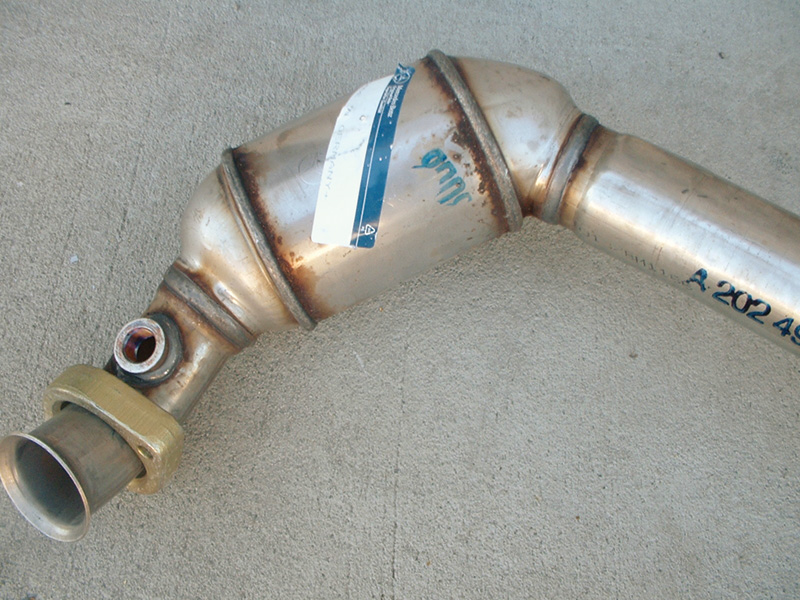
Basic aftermarket catalytic converters that barely meet EPA guidelines are notorious for having short lives. This genuine replacement unit will last as long as the original.
MBUSA offers a powerful tool that can streamline your parts-sourcing research efforts: The EPC (Electronic Parts Catalog), a comprehensive and easy-to-use parts look-up system. It’s a big help and time-saver in searching for exactly the right part, assuring that you’ll always get the correct thing the first time (which is often not the case in the aftermarket). This will go a long way toward avoiding the scheduling disasters that can make customers unhappy with you. The download is free — visit . We believe you’ll actually enjoy using it.
Something that’s not often mentioned is the problem you may have finding a specific part for an older model — Mercedes-Benz owners typically keep their vehicles for a long, long time, so it’s likely that you’ll often have cars in you bays that almost qualify as vintage, or even classic. You can waste a lot of time and end up frustrated searching for parts for these venerable vehicles from the aftermarket, whereas the EPC covers them in detail, and inventories are scrupulously maintained even for what are sometimes called “heritage automobiles†(they may very well be used as daily drivers).
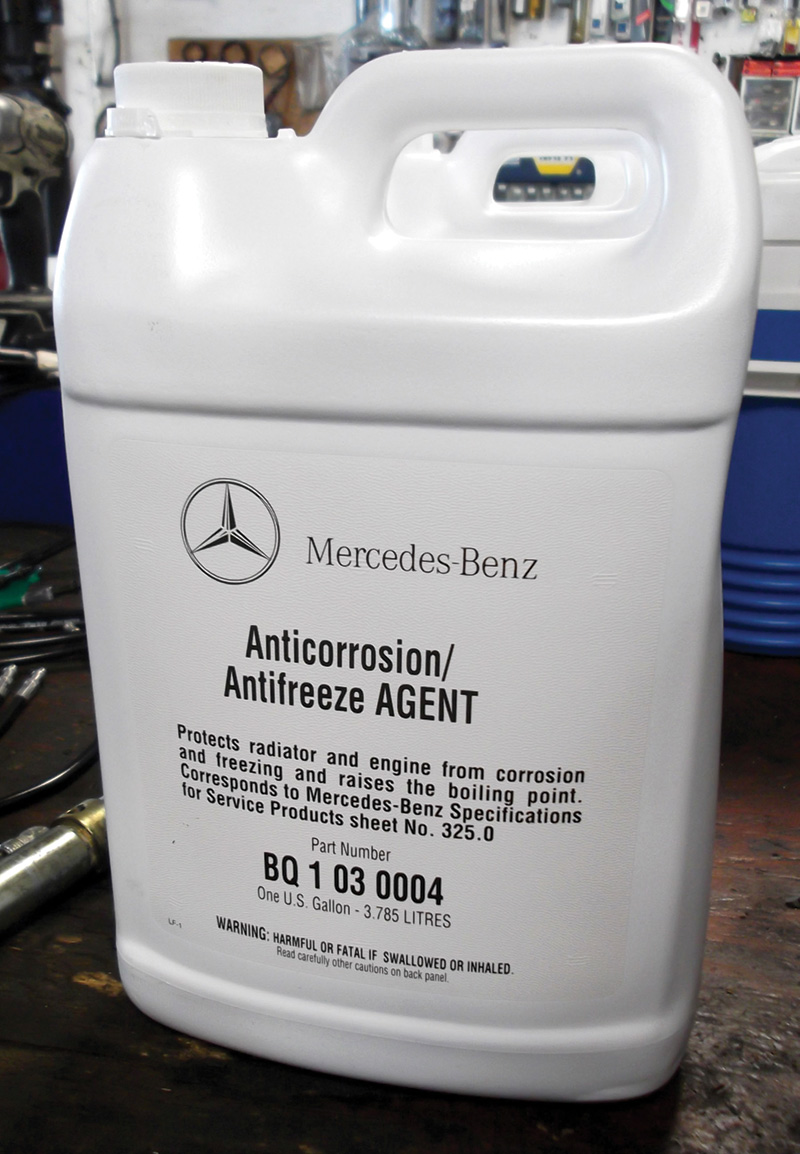
With today’s strict guidelines for antifreeze, is there ever a reason to use anything but the exact O.E. formula?
There’s more to electronic parts sourcing aids. MBUSA has launched the new
www.mbwholesaleparts.com. Among its useful features are model designation charts and technical information resources that will help you order the right parts and make installations easier.
Those electronic aids combined with the superior quality, competitive pricing, and excellent warranty protection you get when you make the commendable decision to purchase genuine Mercedes-Benz parts will contribute to your peace of mind and reputation.Â
Price/value
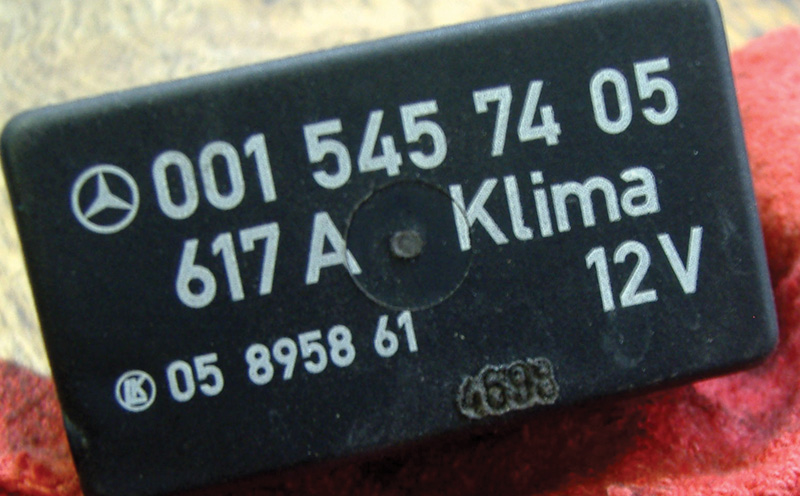
It can be difficult to find parts for an older model, such as this Klima relay, from aftermarket sources. Searching for them takes your valuable time when you could simply go genuine and have easy sourcing from Mercedes-Benz.
Over the years, we’ve seen various carmakers overcharge for their O.E. parts to an egregious extent, trusting that obedient motorists or shop owners wouldn’t question the amount. One example that we especially remember was a sensor for one upscale make that the dealers charged over five times more for than the same Robert Bosch part number could be bought elsewhere.
That’s not the kind of high-handed pricing policy Mercedes-Benz follows. The company does a yearly evaluation to make sure its prices are competitive. It’s often found that certain parts, fuel filters for instance, are more expensive from aftermarket suppliers. And there’s never an issue with quality, fit, or warranty protection when you go genuine.
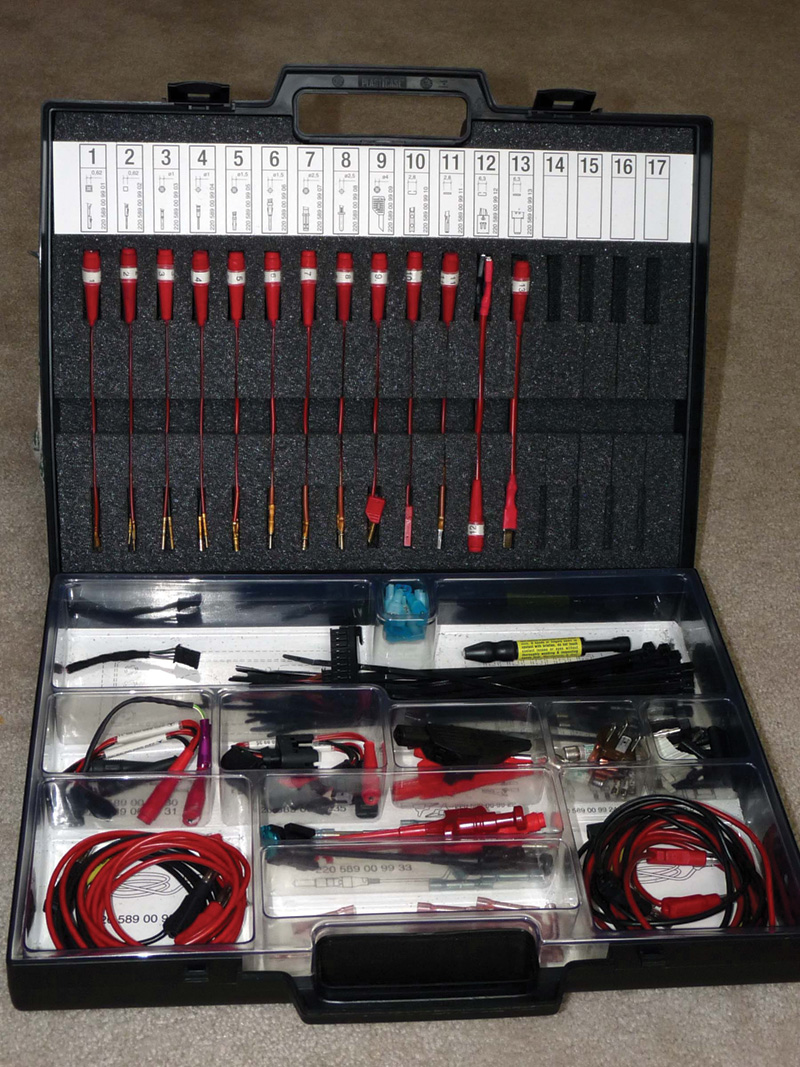
It’s not only parts, but also tools and equipment. Where else can you get something like this comprehensive electrical connection kit but from your local Mercedes-Benz dealer?
As Kerry Jonnson, one of our esteemed technical contributors to StarTuned, has stated, “In the automotive repair business, our customers rely on us to provide the type of service that allows them worry-free operation of their vehicles. They don’t understand how complex these vehicles have become. They just know they need their vehicles to operate in a safe and predictable manner. Here is one buying decision you can make that will help you achieve this goal.â€Â That means “partnering†with your local Mercedes-Benz dealer’s parts department.
We’ll conclude with a statement from another Mercedes-Benz expert: “Say you have a customer who’s spent lots of money to buy a nice E-Class. Using non-genuine parts would be like replacing a link in a chain with a paper clip. It impacts the entire performance level of the car.â€



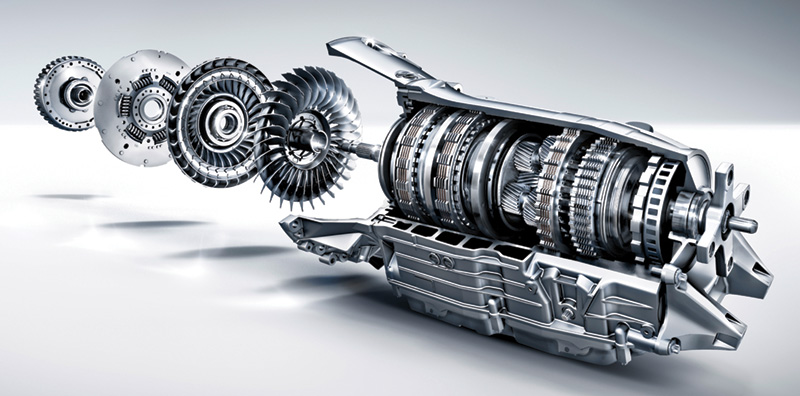
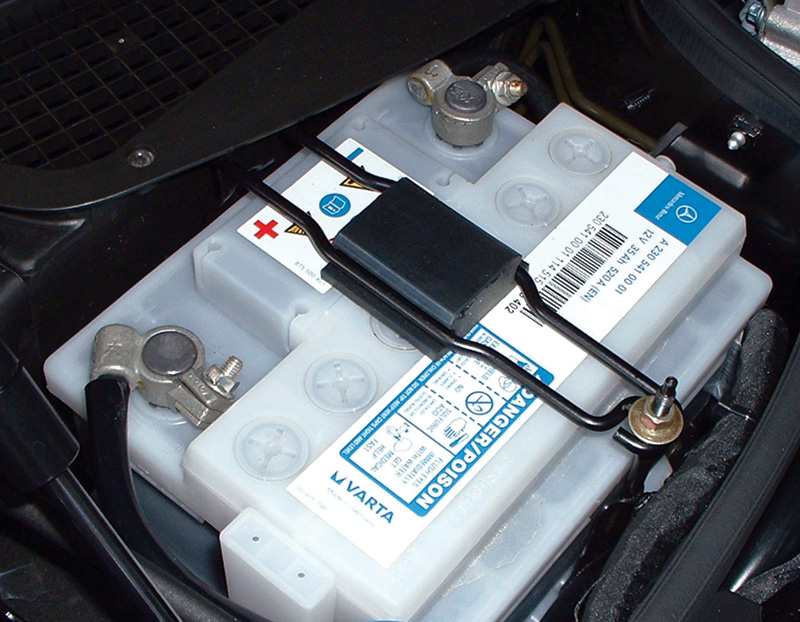




0 Comments